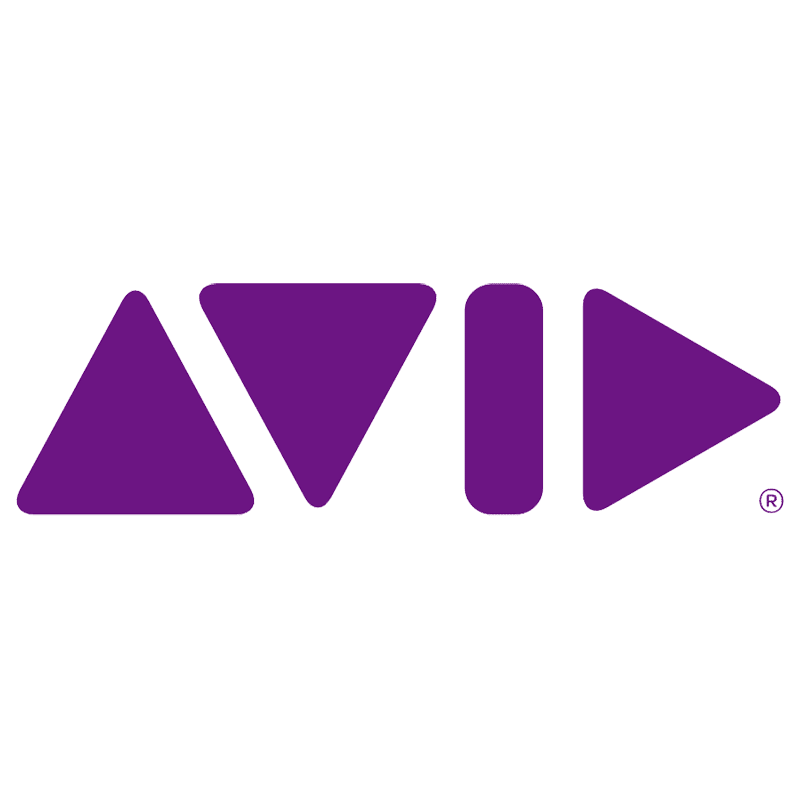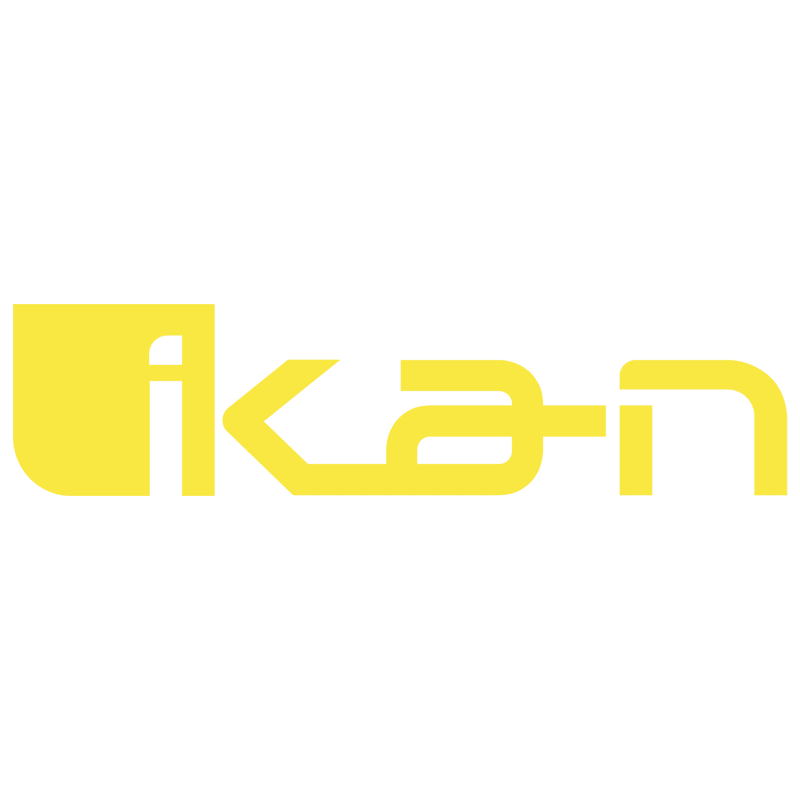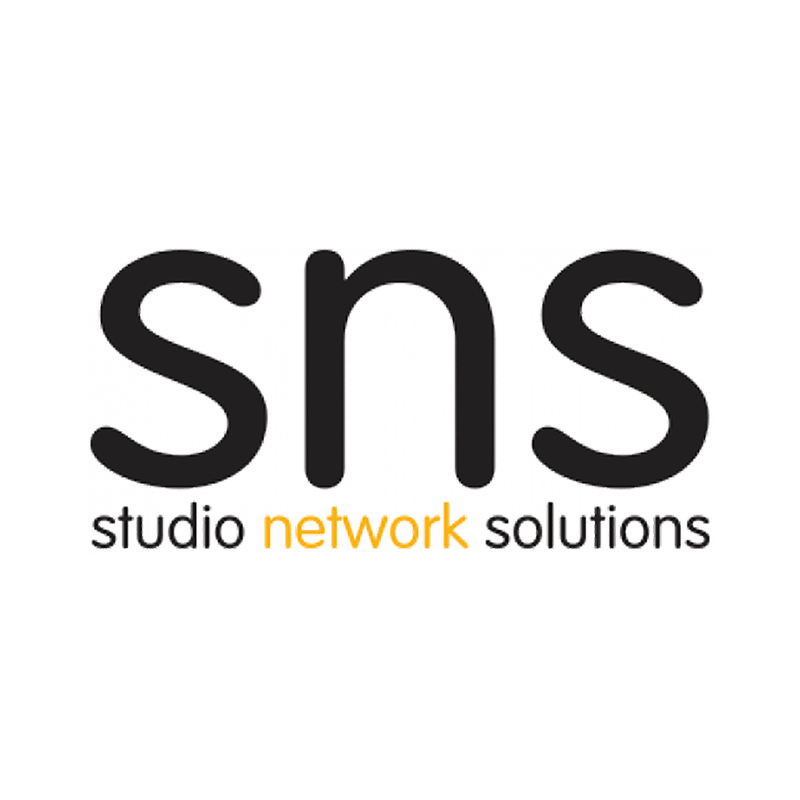Broadcast2Post | Podcast by Key Code Media
The latest episode of the Broadcast2Post Podcast dives into the LED Wall Playbook- a practical guide for organizations considering LED technology. Michael Kammes opens with key questions every team should ask before investing, from space planning to content workflows, helping avoid costly design mistakes. Mike Cavanagh and James Page then demystify LED pricing, comparing real-world costs and long-term ROI against projection and LCD alternatives. Portland State University’s Autumn Joele shares how their Film Department turned an LED Wall into a campus storytelling and engagement hub. Finally, Absen’s Travis Tuttle spotlights the latest LED innovations- transparent panels, chip-on-board design, and immersive curved installs- showing how these trends are reshaping production, education, and live environments alike.
Key Considerations Before You Buy an LED Wall
Before choosing an LED wall, it’s important to step back and ask the right questions. Every space- from a corporate lobby to a worship sanctuary or production studio- has unique viewing distances, brightness challenges, and control needs. Getting these details right early on will help your team plan a system that looks incredible, performs reliably, and fits your budget.
We recommend using the following checklist to align your team internally- facilities, IT, communications, and leadership- before reaching out for quotes. Once you’ve discussed these questions, send your notes to Key Code Media, and we’ll schedule a free LED design consultation to walk through next steps, product options, and accurate budget ranges.
Here are the key questions to ask before you buy an LED wall for your business:
1) What is the primary purpose of the LED wall?
The “why” defines everything else. An LED wall designed for live broadcast has vastly different needs than one meant for corporate branding or worship. Before diving into technical specs, clarify how the LED will serve your space and your audience.
- Broadcast & Virtual Production: Requires color-accurate, high-refresh panels with genlock support.
- Houses of Worship: Prioritize wide viewing angles, silent operation, and easy serviceability.
- Corporate Environments: Emphasize energy efficiency, slim profiles, and aesthetic integration.
- Education & Training: Consider brightness uniformity, low maintenance, and integration with AV control systems.
Questions to ask:
- Will this wall be used primarily for live events, branding, or presentations?
- Do you need broadcast-level color accuracy and refresh rates?
- Will the wall need to integrate with existing control or streaming systems?
2) What’s the viewing distance and resolution requirement?
Pixel pitch — the distance between LEDs — determines both image clarity and cost. Closer viewing distances demand finer pixel pitches (like 1.2mm or 1.5mm), while larger venues can achieve excellent results with 2.5mm or higher.
Use this simple rule:
Viewing distance (in feet) ≈ Pixel pitch (in millimeters) × 8–10
For example, a 1.5mm LED wall looks optimal from 12–15 feet away. Selecting the right pitch ensures you aren’t overspending on unnecessary resolution.
Questions to ask:
- How far is the closest viewer from the screen?
- Is the wall primarily for detailed content (text, graphics) or large visuals (video, imagery)?
- Would a higher pixel pitch save budget without visible quality loss?
3) How will brightness and ambient light impact performance?
LEDs are bright — but environment matters. A 1,200-nit wall may shine beautifully indoors but struggle in direct sunlight. Likewise, too much brightness in a dark worship space can cause eye fatigue.
Key factors:
- Indoor vs. Outdoor Ratings (nits and IP rating)
- Ambient Light Control (dimmers, shading, or sensor-based adjustment)
- Color Calibration (especially important for multi-panel installations)
Questions to ask:
- Will the wall face direct sunlight or changing ambient light?
- Does your team need automatic brightness control?
- What’s the ideal balance between power efficiency and brightness output?
4) How much space and structural support is available?
LED walls require more than just wall space — they need power, ventilation, and structural integrity. A system integrator like Key Code Media can coordinate with facilities and architects to ensure safe, code-compliant installations.
Considerations include:
- Mounting method: wall-mounted, flown, or ground-stacked?
- Structural load: panels, frames, and rigging hardware can add hundreds of pounds.
- Service access: front-service panels simplify maintenance in tight spaces.
Questions to ask:
- Is there enough wall depth and structure to support the LED weight?
- Do you prefer front or rear service access?
- Will HVAC and power distribution support 24/7 operation?
5) What processing and control systems are needed?
Behind every LED wall is a video processor — the brain that scales, syncs, and manages content. From simple HDMI inputs to complex IP-based routing, processing defines flexibility.
Core components:
- LED Controller / Processor: handles scaling, color correction, and EDID management.
- Content Source Integration: NDI, SDI, HDMI, or IP-based sources.
- Control & Automation: touchpanels or software presets for different use cases.
Questions to ask:
- Will content come from broadcast systems, digital signage players, or media servers?
- Do you need to switch between multiple input sources quickly?
- Should non-technical users be able to operate presets easily?
6) How will power, cooling, and service be managed?
LED panels consume significant power and generate heat — especially in high-brightness or 24/7 environments. Proper power distribution, cooling, and accessibility extend product life.
Tips:
- Provide dedicated circuits with surge protection and UPS backup.
- Plan for adequate airflow behind the wall (even with front-service designs).
- Use centralized monitoring for temperature and voltage levels.
Questions to ask:
- Does your facility have sufficient power and ventilation capacity?
- Are panels rated for continuous operation?
- Who will handle routine maintenance and calibration?
7) What’s your installation and maintenance plan?
Modular LED systems simplify setup, but professional installation ensures alignment, safety, and longevity. Maintenance — including pixel calibration and firmware updates — is essential for long-term image quality.
Questions to ask:
- Who will perform installation and calibration — in-house or via an integrator? (We’re available!)
- Do you have a service agreement or support plan in place?
- How often should the wall be inspected and recalibrated?
8) What’s your budget and total cost of ownership (TCO)?
An LED wall is a long-term investment. Upfront panel costs are just one part of the equation — power efficiency, control systems, and service agreements all contribute to TCO.
LED technology has become far more accessible. In 2025, the average cost per square foot of a 1.5mm LED wall dropped below $800, compared to $1,200 just a few years ago. Smart system design can stretch budgets further without sacrificing quality.
Questions to ask:
- What’s your target budget per square foot?
- Have you factored in power, mounting, and processing hardware?
- Is leasing or phased installation an option?
9) What’s your future upgrade path?
Like all AV systems, LED installations evolve. Planning for expansion — larger walls, finer pixel pitches, or integration with XR stages — will future-proof your investment.
Questions to ask:
- Could this system expand into additional walls or rooms?
- Will you eventually need interactive, curved, or transparent LED technology?
- Is your control infrastructure scalable to future inputs and resolutions?
LED Wall Starter Bundles
At Key Code Media, we’ve designed and integrated LED wall systems for universities, broadcast studios, houses of worship, corporate campuses, and entertainment venues across the country. Whether you’re upgrading a stage backdrop, modernizing a lobby, or building a full LED experience center, our team helps you with design, equipment, installation, and training — so you can stay focused on your message and audience.
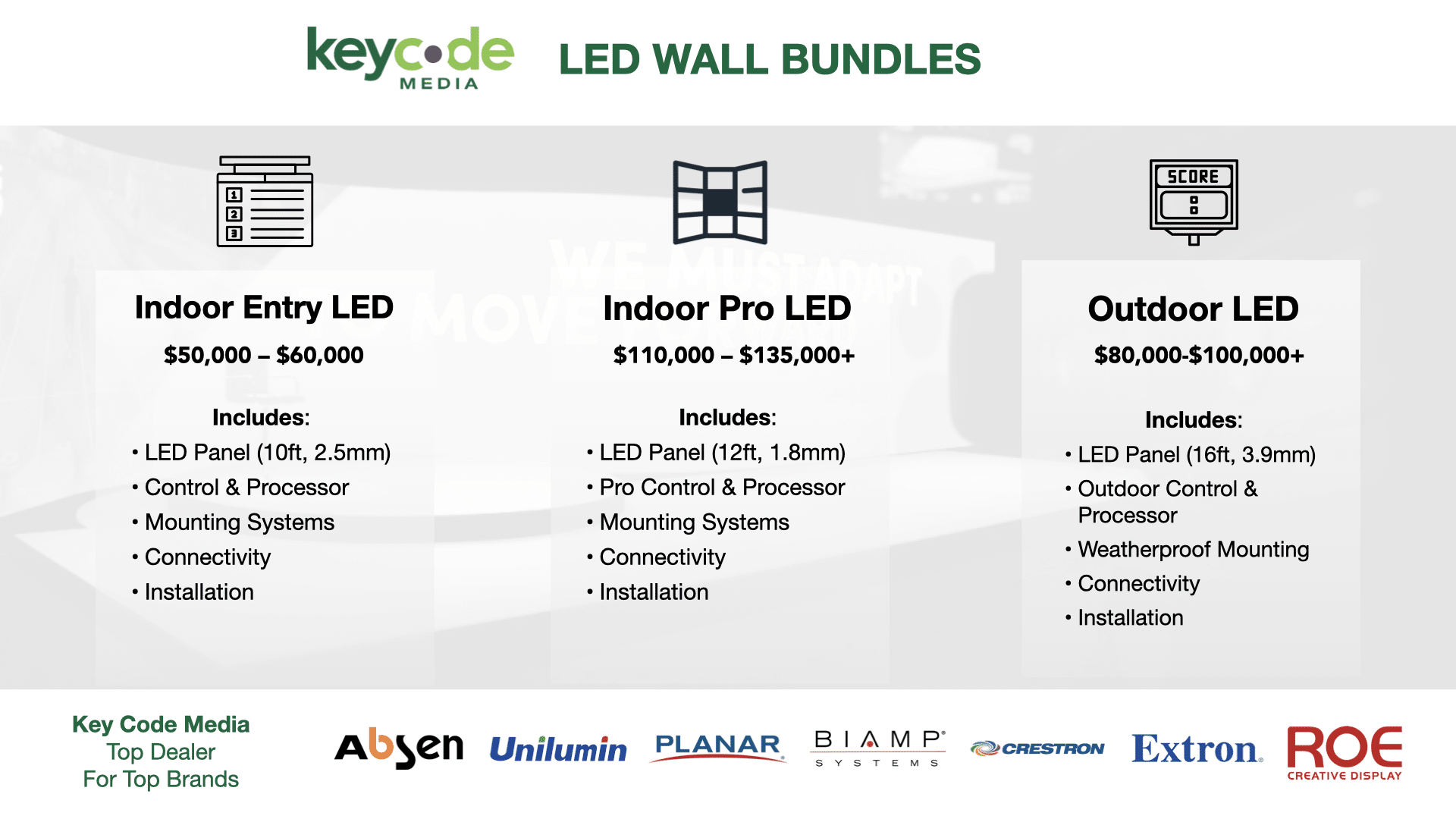

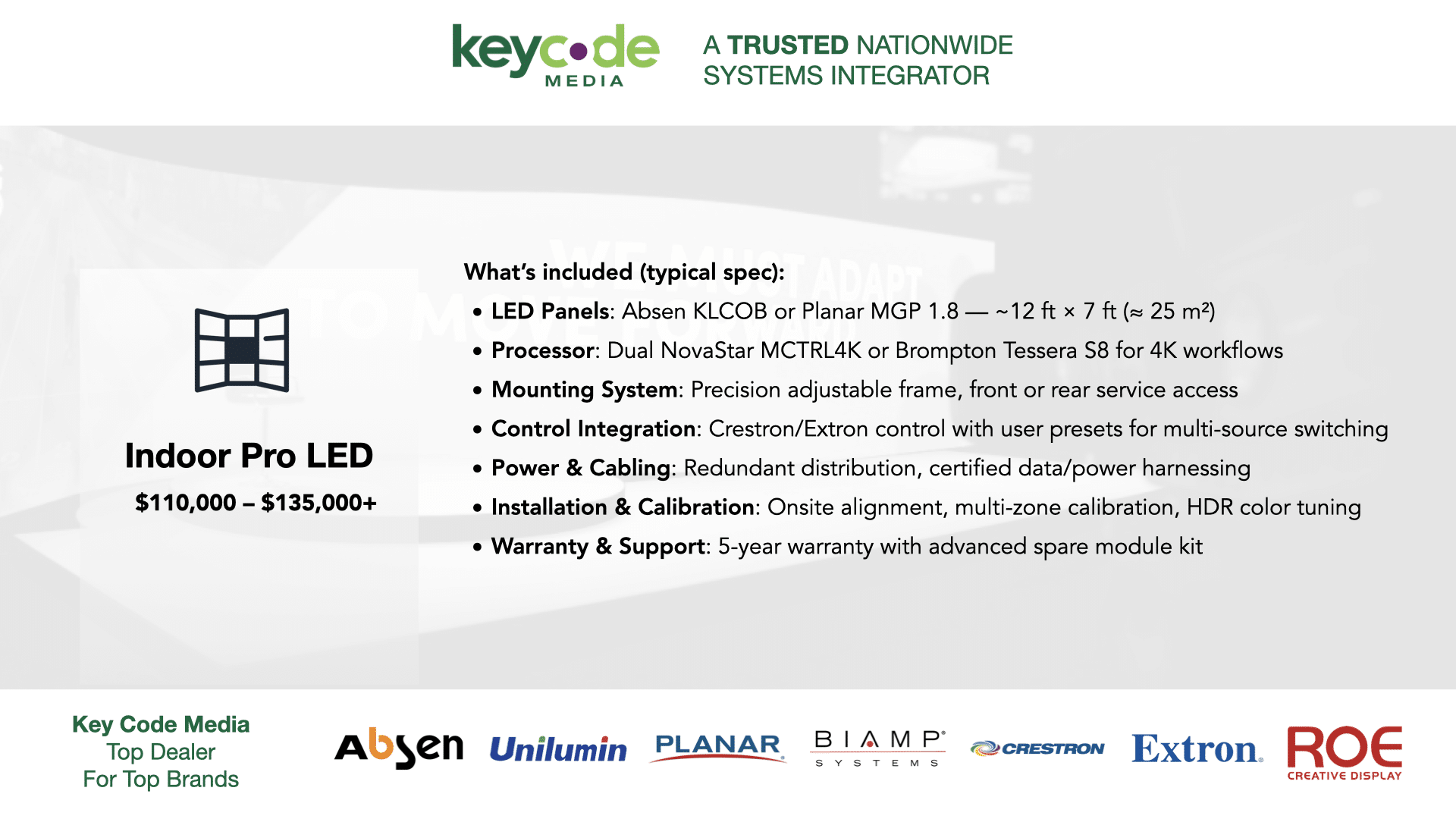
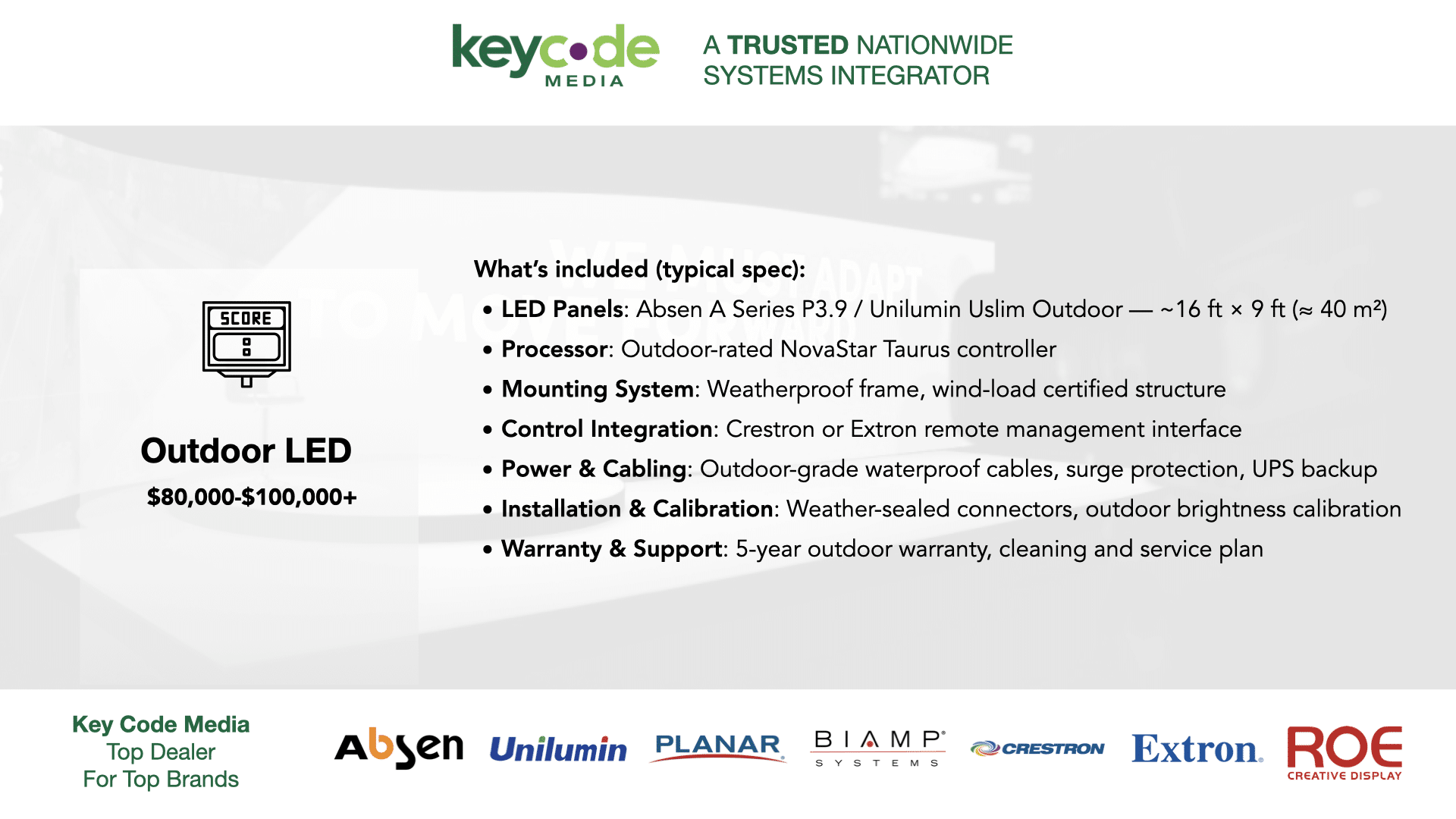
To make it easier, we’ve created a few LED Wall Starter Bundles to guide your planning:
- Our Indoor Entry LED Wall Bundle delivers a bright, reliable 2.5 mm wall ideal for conference rooms, small studios, or classrooms — starting around $50,000 to $60,000. It’s compact, affordable, and front-serviceable, perfect for teams transitioning from projection or LCD video walls.
- Step up to the Indoor Pro LED Wall Bundle for broadcast-grade color, 4K workflows, and HDR performance — typically $110,000 to $135,000. Designed for studios, corporate experience centers, and hybrid event spaces, this bundle scales easily with your production needs.
- And for exterior or high-brightness applications, our Outdoor LED Wall Bundle features weather-rated panels, wind-load certified framing, and Crestron/Extron control integration — starting around $80,000 to $100,000. It’s built to shine in full sunlight and last for years of reliable outdoor performance.
Your next step: complete the key considerations we covered above, then reach out for a free LED design consultation. Our engineers will review your space, audience, and content goals — mapping out the right products, infrastructure, and control system for your budget and timeline.
Contact Key Code Media today to learn more about our LED Wall Starter Bundles and start building a display system that inspires and performs.
BROADCAST2POST SPONSORS
Big thanks to our annual partner sponsors for the podcast!
